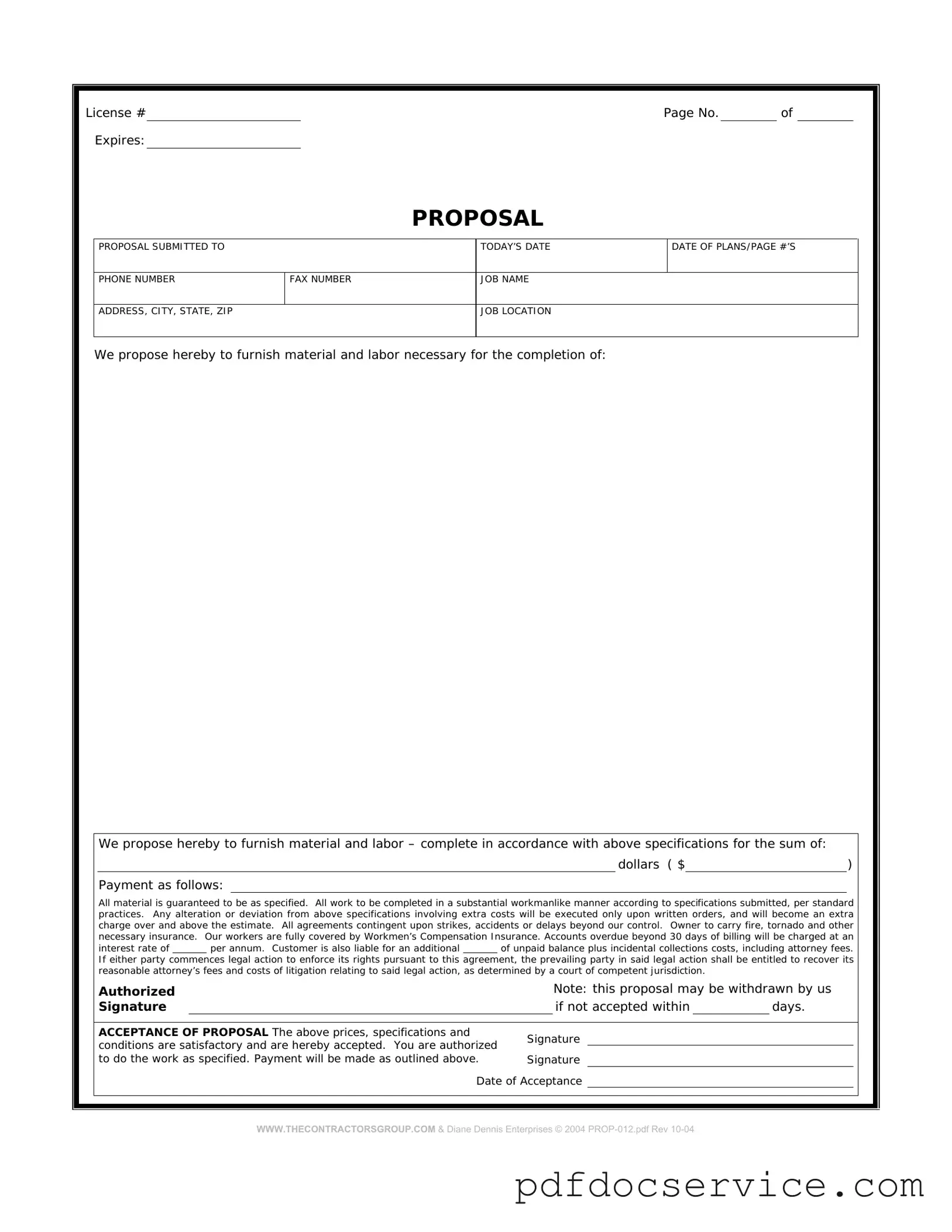Fill Your Construction proposal form Form
The Construction Proposal Form is a crucial document used in the construction industry to outline the details of a proposed project. It serves as a formal offer from a contractor to a client, detailing the scope of work, estimated costs, and timelines. Understanding this form is essential for both contractors and clients to ensure clear communication and successful project execution.
Open Construction proposal form Editor
